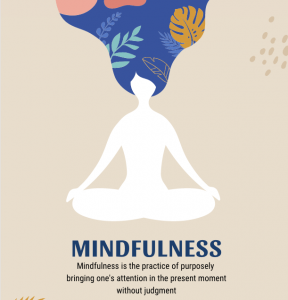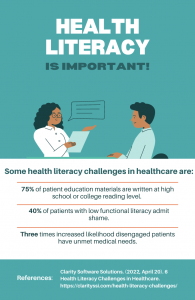13 Special Needs Children and Families
Jordan Lewis
Introduction
Children and youth with special health care needs (CYSHCN) are defined as “children who have or are at increased risk for chronic, physical, developmental, behavioral, or emotional conditions” (Children and Youth, 2021). Currently, there are about 13.6 million children under 18 years old who have special health care needs (Children and Youth, 2021). CYSCHN and their families face many barriers to accessing care while also maintaining good well-being and development.
Stigma and Discrimination
Many caregivers and children with special needs are met with stigma and discrimination from a variety of people and places. There are three sources of discrimination: direct or overt, structural or systemic, and social-psychological (McHatton & Correa, 2005).
Direct or Overt
Direct or overt discrimination appears in different forms. Usually, people direct the discrimination towards the caregiver about the child. People may ask questions to the caregiver or stare because the child does not act or look like a typical child. For the child, attending school makes this more difficult. Many children may joke or question the child about how they act or look, leading to depression or acting out (McHatton & Correa, 2005).
Structural or Systemic
Structural or systemic discrimination often occurs with the professionals assisting the child. For instance, many professionals may view the child as needing “fixing” instead of improving their quality of life as much as possible (McHatton & Correa, 2005). It leaves families who are unfamiliar with the special education system uncomfortable using providers who could help them.
Social-Psychological
Social-psychological discrimination is the caregiver internalizing the stereotypical views from others. This internalization causes them to self-discriminate. (McHatton and Correa, 2005). According to McHatton and Correa (2005), many mothers of children with disabilities who fear discrimination were less likely or willing to interact with others. Their withdrawal leads to the isolation of the child from their peers. This is an example of social-psychological discrimination because the negative opinions the caregiver receives drive them to isolate themselves and their child from the others.
To combat these stigmas, self-compassion can be used as an emotional regulation strategy. Self-compassion allows caregivers to acknowledge and understand their negative reactions to the stigma and discrimination (Wong et al., 2016). Additionally, there is a stigma protection intervention program called SOLACE. SOLACE is a face-to-face and online program that introduces strategies to caregivers to resist stigma and improve their mental health (Lodder et al., 2020). Creating a widespread program similar to SOLACE can give caregivers tools to combat stigmas and improve their mental health.
Effects of Bullying on Children with Special Needs
Bullying negatively affects multiple populations, especially children with special health care needs. Van Cleave and Davis (2006) found CYSHCN would be more likely than children without special healthcare needs to be victims of bullying, bullies, and bully/victims. Those who bullied others were associated with having an emotional, developmental, or behavioral problem requiring treatment. However, those with a functional limitation or a behavioral, emotional, or developmental problem were about two times more likely to be victims of bullying. In addition, studies show victims of bullying had more health problems, including depression, headaches, abdominal pain, and worse health status (Van Cleave & Davis, 2006). So, if they are bullied, they are unlikely to participate in or seek treatment for their mental health. For instance, children with special healthcare needs may not follow necessary treatment regimens at school for fear of more bullying (Van Cleave & Davis, 2006). Primary care physicians can screen for bullying involvement, as the bully or the victim, to bring this problem to the caregiver’s attention (Van Cleave & Davis, 2006). Furthermore, establishing school-based bullying prevention programs can help decrease bullying in schools. For information on how bullying affects children, refer to the following chapter on Bullying.
Stress and Burden of Caregivers
Caregivers face increasing physical, mental, emotional, and social effects while caring for children with special needs. They perform many tasks that many healthcare professionals usually do. These tasks include administering medications or oxygen therapy, changing tubes, suctioning airways, giving injections, or providing continuous and sometimes painful therapeutic regimens (Caicedo, 2014). They face an immense care burden from the high-stress levels of caring for children and youth with special health care needs. This burden can lead to depression, fatigue, poor physical health, and social isolation (Caicedo, 2014). Caicedo (2014) interviewed families for two years and found caregivers of chronically ill children had a lower health-related quality of life than parents with healthy children.

While caregivers may struggle with the amount of work it takes to care for their children, mindfulness training can help reduce some of their stress. This strategy gets them to try being nonjudgmental and aware of the current moment to understand their feelings and thoughts (Benn et al., 2012). By practicing mindfulness, parents and educators can be aware of their emotions and behaviors and regulate them to attend to the child.
Access to Health Services

Less education and poverty create barriers for caregivers and their child with special healthcare needs. Children with special health care needs are more likely to be in low-income families (Porterfield & McBride, 2007). Poverty and lower educational attainment increase the risk of poor health behaviors and outcomes. The lack of education may make many families unaware of their child’s challenges and helpful medical or therapeutic interventions. Porterfield and Mcbride (2007) conducted a survey among caregivers who accompanied special needs children to their appointments. The survey found only half of them could describe a general description of their child’s diagnosis. The education gap is significant. Improving health literacy will allow caregivers to understand their child’s diagnosis and how to access more affordable treatments and services.
Resources
To learn more about resources available for your child, please visit the following links:
- Special Education Guide
- The National Parent Teacher Association details the process of getting your child an IEP, including how to begin the process, what to bring, what questions to ask, and the different services to ask about.
- The ARC @School
- The ARC @School provides training and resources to help families navigate the special education system, including understanding the Individuals with Disabilities Education Act (IDEA), early intervention services, IEPs, and Section 504.
- National Disability Rights Network
- National Disability Rights Network provides access to legal advocacy assistance for disability rights across all 50 states.
- Parent to Parent USA
- Parent to Parent USA is a national network of programs to provide access to quality emotional support for families of individuals with disabilities and/or special health care needs.
Key Takeaways
- Children with special healthcare needs have conditions ranging from chronic and physical to behavioral and emotional.
- Caregivers and their children are met with three sources of discrimination: direct or overt, structural or systemic, and social-psychological.
- Primary care physicians need to screen for bullying involvement, as the bully or victim, to get children the proper resources.
- Mindfulness training is a useful technique to decrease the stress and burden of caregivers.
- Poverty and lack of education create barriers for caregivers and their children to access care.
References
Benn, R., Akiva, T., Arel, S., & Roeser, R. W. (2012). Mindfulness training effects for parents and educators of children with special needs. Developmental Psychology, 48(5), 1476–1487. https://doi.org/10.1037/a0027537
Caicedo, C. (2014). Families with special needs children. Journal of the American Psychiatric Nurses Association, 20(6), 398–407. https://doi.org/10.1177/1078390314561326
Health Resources and Services Administration. (2021, October 18). Children and Youth with Special Health Care Needs (CYSHCN) | MCHB. HRSA Maternal and Child Health. https://mchb.hrsa.gov/programs-impact/focus-areas/children-youth-special-health-care-needs-cyshcn
Lodder, A., Papadopoulos, C., & Randhawa, G. (2020). SOLACE: A psychosocial stigma protection intervention to improve the mental health of parents of autistic children—A feasibility randomised controlled trial. Journal of Autism and Developmental Disorders, 50(12), 4477–4491. https://doi.org/10.1007/s10803-020-04498-0
McHatton, P. A., & Correa, V. (2005). Stigma and discrimination. Topics in Early Childhood Special Education, 25(3), 131–142. https://doi.org/10.1177/02711214050250030101
Porterfield, S. L., & McBride, T. D. (2007). The effect of poverty and caregiver education on perceived need and access to health services among children with special health care needs. American Journal of Public Health, 97(2), 323–329. https://doi.org/10.2105/ajph.2004.055921
Van Cleave, J., & Davis, M. M. (2006). Bullying and peer victimization among children with special health care needs. Pediatrics, 118(4), e1212–e1219. https://doi.org/10.1542/peds.2005-3034
Wong, C. C. Y., Mak, W. W. S., & Liao, K. Y. H. (2016). Self-compassion: A potential buffer against affiliate stigma experienced by parents of children with autism spectrum disorders. Mindfulness, 7(6), 1385–1395. https://doi.org/10.1007/s12671-016-0580-2
a caring and compassionate attitude toward oneself in the face of hardship or perceived inadequacy
when an individual, because of a disability, does not have the physical, cognitive or psychological ability to independently perform the routine activities of daily living
a prescribed course of medical treatment, way of life, or diet for the promotion of or restoration of health
is a treatment that provides you with extra oxygen to breathe in
is an individual's or a group's perceived physical and mental health over time
is a mental training practice that teaches you to slow down racing thoughts, let go of negativity, and calm both your mind and body

